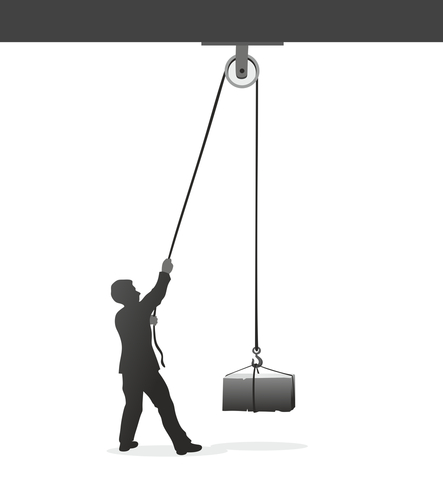What does conservation mean?
One of the main laws in physics is as follows:
.jpg)
This means that the total amount of energy in the Universe cannot change. All processes use energy, but the energy is just being turned from one form of energy into another. It isn't being made from out of nowhere, nor disappearing completely. This law is called the principle of conservation of energy.
Energy transfers
Energy changers are devices that convert energy from one form to another.
For example:

A car engine converts the chemical energy stored in petrol into kinetic (movement) energy. Sound and heat (thermal) energy are also produced.
We use energy changers to change energy from one form into a form that we can put to a specific use.
Listed below are some examples of energy changers that we use every day.
Kettle ![]() electrical energy into thermal (heat) energy
electrical energy into thermal (heat) energy
Torch ![]() chemical energy (in batteries) into light and thermal energy
chemical energy (in batteries) into light and thermal energy
Television ![]() electrical energy into sound and light
electrical energy into sound and light
Loudspeaker ![]() electrical energy into sound energy
electrical energy into sound energy
A diver ![]() gravitational potential energy into kinetic (energy) as he falls into the water
gravitational potential energy into kinetic (energy) as he falls into the water
These examples all show how energy can be converted into a form that we can put to use. Even you are an energy converter!

You convert the chemical energy stored in your food into kinetic energy (to make you move), thermal energy (to keep you warm) and electrical energy (all the signals sent around your body to and from the brain are electrical signals).
Energy converters are not perfect and some of the energy they change is wasted. In the car engine, for example, the petrol is converted into kinetic energy (which you want), but sound and thermal energy are also produced. The sound and thermal energy are wasted energy because not all the energy contained within the petrol is being converted into kinetic energy to move the car.
Simple machines
You also need to have a basic understanding of how simple machines work, such as pulleys.

A pulley allows a person to lift a heavy object.
The main idea to remember is that (Force x distance) is always constant.
This means, that if two objects are connected in a system, and they need to move by different distances, then they will need a different amount of force needed to move them.
In the case of a pulley, there are two forces: the weight of the object (which is large), and the force of the person pulling on the other side (which is much weaker).
Using the law that (Force x distance) = constant, it means that, provided the person pulls the rope downwards by a given distance, the weight on the other side has to rise to keep this constant.








